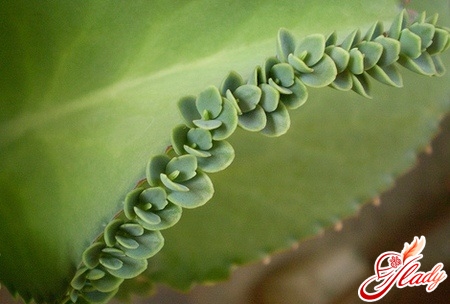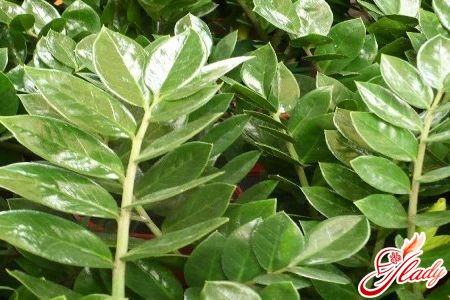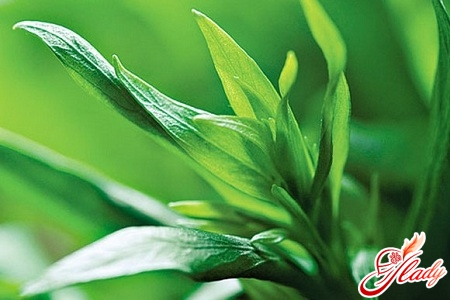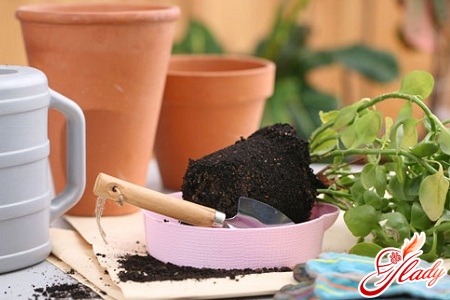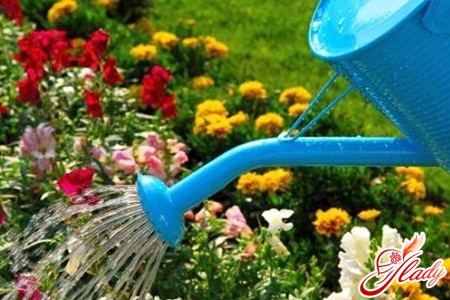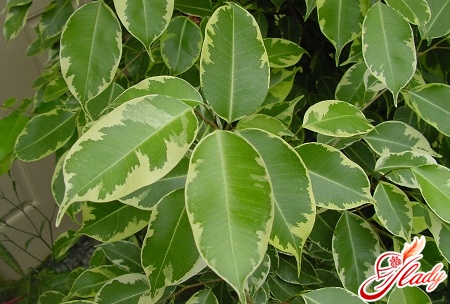 Among the indoor relatives of the mulberry familyFicus Benjamin is one of the most common representatives of trees and shrubs of the genus Ficus. In the natural environment (India, China) it reaches twenty-five meters, domesticated varieties in favorable conditions can grow up to two to three meters. The main advantage of this evergreen tree is its wide crown with many glossy green or variegated leaves. Therefore, the main sign of most ailments that haunt the ficus will be the condition of its foliage. And if the conditions of maintenance do not suit your plant, then first of all the ficus will react by shedding its lush crown. I would like to immediately warn novice gardeners - almost all diseases are associated with improper maintenance and care of the ficus. We have already discussed the rules of favorable maintenance in detail in other articles that you can find on our website, so today we will focus only on specific points on which the health of the ficus Benjamin depends.
Among the indoor relatives of the mulberry familyFicus Benjamin is one of the most common representatives of trees and shrubs of the genus Ficus. In the natural environment (India, China) it reaches twenty-five meters, domesticated varieties in favorable conditions can grow up to two to three meters. The main advantage of this evergreen tree is its wide crown with many glossy green or variegated leaves. Therefore, the main sign of most ailments that haunt the ficus will be the condition of its foliage. And if the conditions of maintenance do not suit your plant, then first of all the ficus will react by shedding its lush crown. I would like to immediately warn novice gardeners - almost all diseases are associated with improper maintenance and care of the ficus. We have already discussed the rules of favorable maintenance in detail in other articles that you can find on our website, so today we will focus only on specific points on which the health of the ficus Benjamin depends.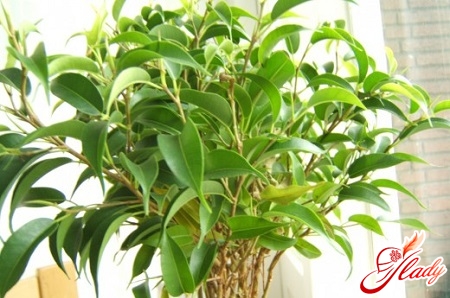
Factors affecting the health of the fig tree of Benjamin
The first reason why the Ficus Benjaminmay shed leaves, is natural aging. Each leaf of this plant lives for about three years, after which it turns yellow and falls off. But the process of crown renewal is usually not sharp and massive: from time to time one, two or three old lower leaves give way to new ones. However, if a large amount of greenery turns yellow or the trunk suddenly becomes “bald”, this is already a signal for action! What to do? Conduct a thorough visual inspection of the plant. Determine the nature of the yellowing of the leaves: has the entire leaf or only its tip lost its green color, or maybe brown spots have appeared, are the leaves curling or simply drying out? And on which side is there more yellowness? Look under the leaves - perhaps the cause of the disease is insect pests. Pay attention to the condition of the soil: does it smell of rot or maybe the roots have dried out? The more carefully you examine the Benjamin ficus, the more accurate your diagnosis will be, and therefore, the treatment will be chosen correctly. Here's how different factors affect your green pet's health:
- Lighting
The leaves turn pale or yellow and then fall off.shady side? This means your plant is not getting enough sun. Place the pot closer to the window or add artificial lighting. The appearance of brown spots followed by yellowing of the leaf on the side of the light source most likely indicates that the ficus has received sunburn. Shade the sunny window or move the pot with the tree some distance away from it.
- Temperature
It also happens that the leaves of the ficus wither andcurl up - this happens when the temperature is low. Or maybe your pot is located too close to a cold winter window or is near an open vent. In this case, the treatment will be obvious - increase the air temperature and do not place the plant in the path of a draft. Due to sudden changes in temperature or unexpected changes in lighting (for example, in the spring you immediately put the ficus on the balcony), small watery yellow spots form on the leaves, which lead to the death of the entire leaf, and in advanced cases - and the entire ficus. Ficus Benjamin should be accustomed to changes in conditions gradually, taking it out into the fresh air for two to three hours during the week. In the fall, a gradual adaptation to indoor maintenance is also needed.
- Humidity
With insufficient humidity, ficus leavesBenjamin can fall unexpectedly quickly. Moreover, the plant's reaction may be delayed, that is, the fact of low humidity has already been corrected, but the leaves may still fall. For such cases, it would not be superfluous to have a humidity indicator at home. The presence of brown leaf tips also indicates excessive dryness of the air. To increase humidity, it is recommended to use a humidifier or place the pot on a tray with wet expanded clay, and do not forget to spray the ficus from a spray bottle.
- Watering
Overwatering the plant is extremely negativeaffects the general condition of the ficus. This is evidenced by the appearance of dark spots on the leaves and a putrid smell coming from the soil. With constant stagnation of water, the root system rots, and it will most likely not be possible to save the ficus. To prevent negative consequences, reduce watering and stop spraying the leaves. Remember that the soil should dry out a little before each watering. And use warm, settled water for watering, cold water will provoke a decrease in temperature, and the leaves may fall off.
- Fertilizer
The general condition of the ficus is satisfactory, andnew shoots are thin, leaves grow small. Why? Unfortunately, your plant either does not have enough light or does not have enough nutrition. In this case, the treatment consists of increasing the lighting or additional fertilizing the ficus with mineral additives.
- Transfer
If the trunk begins to become bare and the leaves turn yellow,Pay attention to the size of the pot and replacement of the old soil. Perhaps the roots of the ficus no longer fit in the "dwelling" and even stick out of the drainage hole. Choose a container slightly larger than the previous one and replace the soil.
- Pests
Pests that affect ficus - spiderspider mite, aphid, scale insect, mealybug. Basically, pests affect your plant at high temperatures and low air humidity. Characteristic signs of this misfortune are the appearance of spots, sticky coatings, cobwebs on the leaf blades, which causes the leaves to turn yellow, wither and fall off. Spider mites and aphids can be easily gotten rid of by wiping and spraying the plant with a soap solution or a diluted solution of Bordeaux mixture. To destroy other pests, this will not be enough; additional treatment with insecticides is necessary.
- Infections
Unfortunately, Ficus Benjamina is susceptible tosome infectious and fungal diseases. For example, black sooty fungus may appear. Sticky secretions of pests are a favorable condition for plant infection. Or powdery mildew - it looks like a white coating on the leaves, which easily separates from the leaf when moving and is transferred to another part of the plant. Methods of combating fungal diseases include removing the affected leaves and treating the crown with a fungicide solution. Root rot is a bacterial disease caused by overwatering. It is necessary to replace the soil and remove rotten roots. In advanced cases, the ficus is thrown away along with the pot. According to most amateur flower growers, Benjamin's ficus sheds leaves very easily. A simple change of scenery is enough to make it dissatisfied - for example, when you were transporting it from the store home or even if you just unexpectedly turned the pot with the plant the other side towards the light. Any stress - and the ficus immediately sheds even green leaves. Try to take this into account! Love your plant, take care of it and do not disturb it in vain, and then no diseases will be scary for your home tree. And for many years you will be pleased with the beautiful and noble symbol of the capital of Thailand - the magnificent ficus Benjamin.




